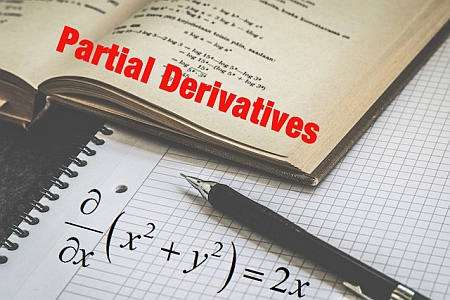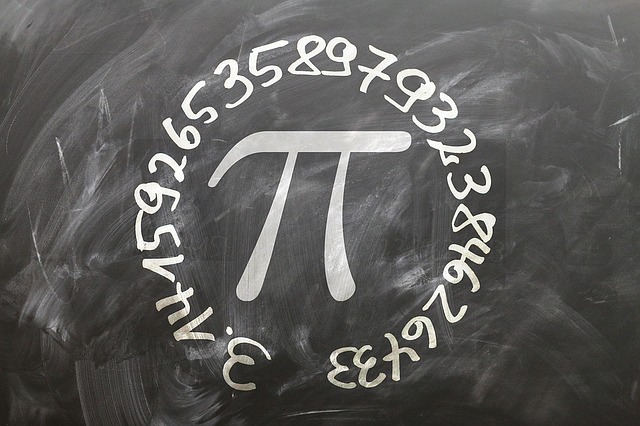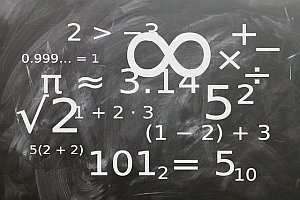Partial Derivative Calculator
Instructions: Use this partial derivative calculator to find the derivative of a function of more than one variable that you provide with respect to a specific variable, showing all the steps of the process. Please type the function you want to calculate the derivative for in the box below.
About Partial Derivative
This calculator will allow for you to compute the partial derivative of any valid differentiable function you provide, with respect to a given variable.
The function you provide needs to come with a function definition, like f(x, y) = x^3 + y^2. If you write something like xy+x^2, without the full definition, it will be assumed that a function of two variables x and y is provided.
Once you provide a valid differentiable function and a valid variable, the next step is to click on "Calculate" button to get shown all the steps of the process, with all the derivative rules used, explicitly stated.
Derivatives, and their natural extension to multiple variables partial derivatives are among the most important subjects of study in Math, period. This is because they deal with a rate of change and flow of many models that appear in applications frequently.

What is a partial derivative?
In simple terms, a partial derivative consists of conducting the same as a regular differentiation with respect to one variable, assuming that the rest of variables are constant.
If we were to formally define a partial derivative, let's make it easier and do it for a function of two variables, \(x\) and \(y\). The partial derivative with respect to \(x\) at the point \((x_0, y_0)\) is
\[\frac{\partial f}{\partial x}(x_0, y_0) = \displaystyle \lim_{h \to 0} \frac{f(x_0 + h, y_0) - f(x_0, y_0)}{h} \]So, as we can see, it is essentially the same as the definition of the regular derivative, only that there is a another variable, but it remains constant in the process of the calculation.
Similarly, the partial derivative with respect to \(y\) at the point \((x_0, y_0)\) is
\[\frac{\partial f}{\partial y}(x_0, y_0) = \displaystyle \lim_{h \to 0} \frac{f(x_0, y_0 + h) - f(x_0, y_0)}{h} \]The vector of all partial derivatives is called the gradient. If you need to actually get all partial derivatives, you can use this gradient calculator.
Steps for computing partial derivatives
- Step 1: Identify the function you want to compute the partial derivative of. Make sure to simplify it first
- Step 2: Observe that not all functions are differentiable, so you need to make sure that the function involved is actually differentiable
- Step 3: Use all appropriate derivative rules to the function, and differentiate the function as you would normally with respect to the differentiable variable, and consider any other variable as constant
This way, when we do the partial derivative with respect to x for something like 'x^2+y^2', in the process of partial differentiation with respect to x, the variable y is treated as a constant. So we would get
\[\frac{\partial (x^2+y^2)}{\partial x} = \frac{\partial (x^2)}{\partial x} + \frac{\partial (y^2)}{\partial x} = 2x \]and in this case \(\frac{\partial (y^2)}{\partial x} = 0\) because y is a assumed to be constant with respect to x.
Why use a partial derivative calculator
Computing partial derivatives can be a relatively straightforward exercise, but it does not mean is necessarily easy. It is important to be very systematic at the time of applying the corresponding derivative rules.
Using a partial derivative calculator with steps can help you to at least check your result and be able to see exactly what are the correct steps and what derivative rules need to be used.
Particularly in complex problems, with algebraically complicated expression a calculator can really come in handy.

What are derivative rules for partial derivatives?
They are exactly the same as those for regular derivatives. For partial derivatives we have linearity, the product rule, the chain rule and the quotient rule. Typically, you will end up using a combination of all those rules, for the more complex derivative examples.
What is implicit differentiation
There is a situation when there is more than one variable involve in which we don't assume for example that y does change with x, like we do in partial derivatives. In some cases, when there is an equation linking the variables, we assume there is an implicit relationship between y and x, and we write y = y(x).
This is the context of implicit differentiation, which is kind of a hybrid between partial differentiation and regular differentiation.
And there is really one thing that cannot be overstated: Partial derivatives are truly one of the main tools used in Engineering, Physics and Economics.

Example: Partial derivative calculation
Calculate the partial derivative \(\frac{\partial f}{\partial y}\) for: \(f(x,y) = \sin(xy)\)
Solution:
which concludes the calculation.
Example: Partial Differentiation
Calculate the partial derivative with respect to \(x\) of: \(f(x, y) = x^2 + y^2\)
Solution:The function that is provide is: \(\displaystyle f(x,y)=x^2+y^2\), for which we need to compute its partial derivative with respect to the variable \(x\).
The function does not need further simplification, so we can proceed directly to compute its partial derivative:
Example: Another partial derivative example
Consider the function \(f(x, y) = \frac{xy}{x^2+y^2}\), find its partial derivatives \(\frac{\partial f}{\partial x}\) and \(\frac{\partial f}{\partial y}\).
Solution:In this case, the function is : \(\displaystyle f(x,y)=\frac{xy}{x^2+y^2}\), for which we need to compute its partial derivatives .
The function came already simplified, so we can proceed directly:
Now, on the other hand:
More Calculus calculators
The concept of Derivative is at the center of Calculus, and the use of a derivative calculator can greatly aid you in many different Calculus applications, including optimization, one of the 'biggies'.
The idea of derivative extend naturally to the case of function with many variables, where a partial derivative calculator will do the same as a regular derivative, but now only one variable is assumed to vary, whereas the other variables are taken as fixed .
Often times, you are know that \(y\) depends on \(x\), but not explicitly but rather implicitly, by means of a linking equation, in which case you can use implicit differentiation to use the rules of derivatives to get an expression for which you can then solve for the derivative \(\frac{d f}{d x}\) .



